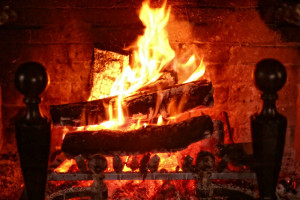Your chimney is more than just a stack of bricks and mortar; in fact, chimneys are surprisingly complex structures with different parts and components that all work together to keep your fireplace burning safely and efficiently. By better understanding the anatomy of your chimney, you can begin to learn more about the purpose and function of the unique – and important – components of your chimney.
Chimney cap
The chimney cap is a metal cover used to protect the top of the flue; chimney caps also often have mesh or wire sides as a way to keep animals and debris from getting into the flue. In addition to keeping out moisture, animals, and debris, chimney caps can also aid drafting by preventing downdrafts caused by wind.
Chimney crown
The chimney crown is the masonry or concrete slab that covers the top of the chimney; the chimney crown seals around the top of the flue pipe which the chimney cap then sits on top of. Well-designed chimney crowns will have an overhang of at least 2-2.5 inches to allow water to flow onto the roof instead of the sides of the chimney. Because they often take the most “direct hits” from the elements, chimney crowns are more prone to damage such as cracking.
Chimney chase
While the flues of masonry chimneys are surrounded by bricks and mortar, the flues of prefabricated or factory built chimneys are surrounded by the chase. The chimney chase is built around the flue to protect it as well as help make it more aesthetically pleasing; chimney chases are often made using the same siding or building materials as the rest of the home.
Chimney chase cover
If you have a prefabricated or factory built fireplace, your chimney will have a chase cover in place of a chimney crown. The chimney chase cover is a piece of metal – often a galvanized metal such as aluminum – that covers that top of the chimney chase and seals around the top of the flue. Because they are made out of metal, chimney chase covers may rust over time; staining on the sides of a chimney chase is often the first sign that the chase cover has begun to rust.
Damper
The damper is located at the top of the firebox between it and the flue and can be opened and closed using a pulley or lever when the fireplace is in use. Dampers should be opened when the fireplace is in use to allow smoke and gas to vent up the chimney; when not in use, dampers should be closed to prevent conditioned air from escaping.
Flue and flue lining
The flue is the metal pipes that create the venting system for the chimney; to protect the surrounding building materials, flues have liners made from materials such as clay tiles or stainless steel. Flues may need to be relined after damage or when a new fireplace is installed.
Learning about the anatomy of your chimney can help you understand the purpose and function of each chimney component. For more information about the anatomy of your chimney, contact Pristine Sweeps today!

